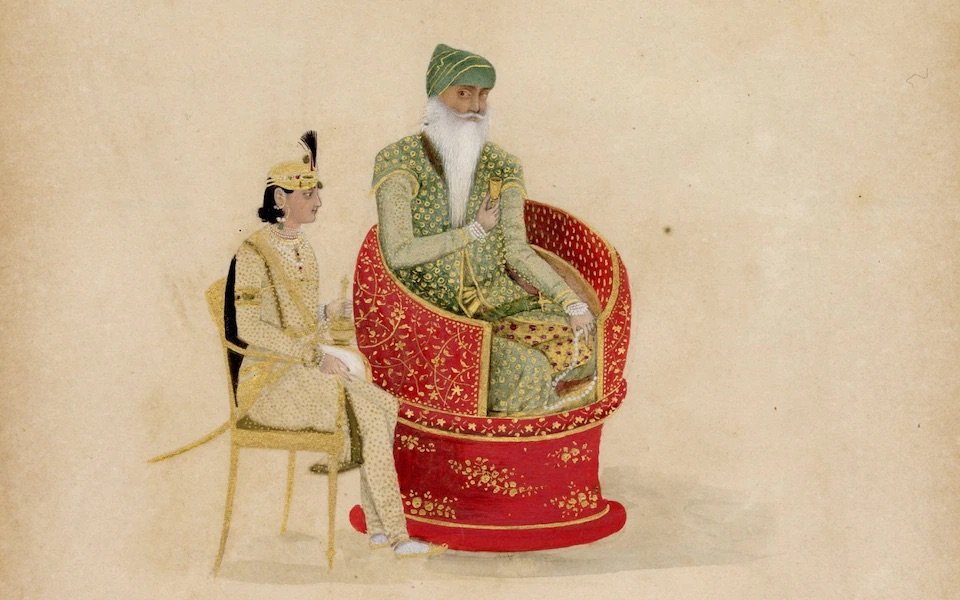
RANJIT
SINGH
Maharaja Ranjit Singh with his favourite, Raja Hira Singh, attending as a cup-bearer (C. 1835-1838) Toor Collection
WHAT? Ranjit Singh: Sikh, Warrior, King
WHERE? The Wallace Collection, Manchester Square, London W1U 3BN
WHEN? Now until 20th October
WHY GO? For an epic Indian experience. Known as the ‘Napoleon of the East’, founder of the Sikh Empire, Ranjit Singh, led a remarkable life as illustrated in this dazzling exhibition that pays homage to one of history’s great leaders.
Indeed, a recent poll with BBC World Histories placed him above the likes of Churchill and Lincoln and this riveting exhibition sets out his story through exquisite miniature images, bejewelled armour, opulent objects and captivating Indian music.
Sikh treasures stored away at The Wallace have been dusted off to illuminate the show which explores Singh’s ambitious drive as a warrior, skill as a diplomat and connoisseur of the arts.
Born in 1780 and blinded in one eye after contracting smallpox as a child, he nevertheless packed an unimaginable lot into his victorious reign.
Singh conquered the invading Afghans at the age of 16, acquiring swathes of territory at 19, was proclaimed Maharaja of Punjab at the age of 21 and famously sequestered the fabled Koh-i-Noor diamond along the way, which has controversially ended up as part of the British Crown Jewels.
Despite the dodgy eye, Singh had twenty wives, and as a mark of devotion upon his death aged 58, four wives along with seven concubines committed suttee by throwing themselves on his funeral pyre in 1839.
Some said he died of a stroke, others liver alcoholism, either way his historic reign has left a legacy of glittering treasures and epic stories.
IN THE KNOW A beautiful but tragic highlight is a mournful painting of Singh upon his funeral pyre with his four wives and maidservants (one barely 12) waiting to be sacrificed alongside.
The practice of sati or suttee had been condemned in the 16th century but was still practiced in the 19th century despite being banned by the British in 1829.


